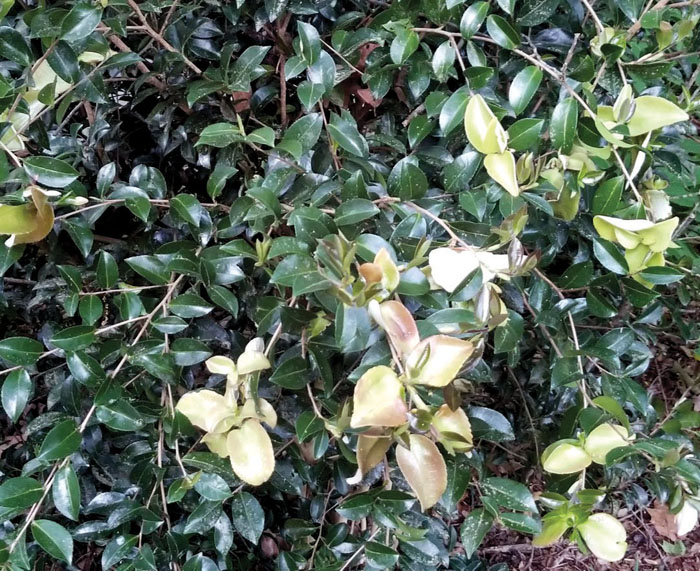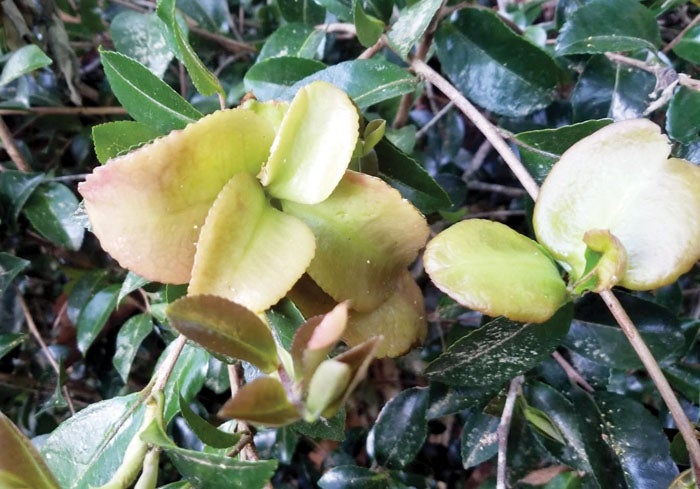Darrell Blackwelder: Camellia leaf gall is a fungus, but causes little damage
Published 12:00 am Sunday, April 26, 2020

- Camellia leaf gall. Photo by Darrell Blackwelder, for the Salisbury Post.
By Darrell Blackwelder
For the Salisbury Post
There was something a little strange about the camellia sasanqua in our landscape this week. The leaves were thick, light pink and contorted. Camellias throughout the county may be infested with camellia leaf gall (Exobasidium sp.) This foliar disease is caused by overwintering fungi which survives the winter in leaf buds infecting newly developing leaves. The infested leaves become thickened and appear to be succulent often larger than normal leaves. These young, diseased leaves are grossly distorted with a pinkish-green color on the top leaf surface and a white color on the under-leaf surface. Fungal spores of the disease are dispersed by strong wind currents and splashing water. The weather experienced this spring is perfect for spreading the disease. The diseased camellia leaves eventually dry up turning brown to black becoming unsightly later this month.
Fortunately, leaf gall causes little damage to the overall health of the shrubs or to camellia flowering, but may be unsightly in the landscape or garden.
You can prevent future infestations by removing and discarding diseased leaves as soon as the leaf swelling begins to prevent new infections next year. Fungicidal applications are seldom necessary and provide only limited disease control. Cool and rainy earlier this spring during bloom period this spring was conducive to spreading the disease. Leaf gall fungus also attacks certain species of azaleas and blueberry plants.
Darrell Blackwelder is the retired horticulture agent and director with the North Carolina Cooperative Extension Service in Rowan County. Contact him at deblackw@ncsu.edu .




